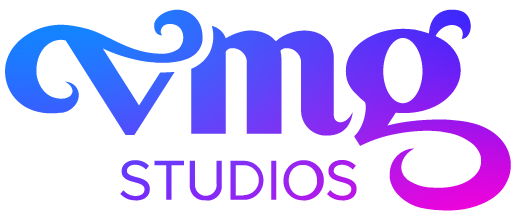
The art of presenting holds importance not only within the creative industry but also in the broader business world. A presenter's body language and movement techniques play a pivotal role in effectively conveying a message. Recognizing our expertise in this field, VMG Studios understands that mastering the skill of presenting can elevate your message and leave a lasting impact on your audience. Whether you’re delivering a formal business presentation or engaging in public speaking, there are several valuable tips to help you connect with your attendees and deliver a more compelling pitch:
- Eye Contact: Make a conscious effort to establish connections with various individuals in the audience by maintaining brief moments of eye contact. Research has confirmed that eye contact plays a crucial role in social interactions and impressions. Ensure that your gaze is natural and not overly intense to prevent making the crowd feel uncomfortable.
- Posture: Maintain a grounded stance by positioning your feet shoulder-width apart. An upright spine not only conveys confidence but also portrays openness. Avoid crossing your arms and ensure that you are not obstructed by any barriers on the stage, maintaining an open and approachable posture.
- Facial Expressions: Incorporate natural smiles to foster rapport and exude warmth. Use your eyebrows expressively to highlight your emotions and highlight important messages. Additionally, utilize gestures to underscore your main ideas, making them more memorable.
Navigating the Space: Effective Movement Techniques
Incorporating movements in your presentation and claiming your space can exude self-assuredness and authority when presenting. Here are some best practices:
Purposeful Movement:- Step forward when you are emphasizing a key point, creating a visual punctuation.
- Make strategic use of the stage space. Use different areas for each aspect of your presentation. For instance, one side might be for problem identification, and the other for solutions, reinforcing the visual distinction.
- Use movement to signify transitions between different sections or ideas in your speech. For example, you can take a step to the side or change your position on the stage to visually signal a shift in the topic.
- Participation and interaction have been found to increase engagement and knowledge retention. Studies in education and psychology show that active engagement, including physical activities, can improve learning outcomes.
- Walk towards your crowd, shake hands, or make brief contact when appropriate.
- Encourage your attendees to stand up, stretch, or perform a simple physical activity that relates to your topic.
- If you're narrating a journey or a timeline, physically move along with the narrative to enhance the storytelling experience.
- Try to subtly mirror and synchronize the mood and expressions of your audience to build rapport.
It's equally important to be cognizant of the pitfalls to avoid during presentations as it is to master the “do’s”. Here are the top 10 things not to do when presenting creative projects before a group:
- Overloading Information – Avoid cramming too much information into your speech.
- Monotonous Delivery – Steer clear of a monotonous vocal tone; it can quickly disengage your viewers.
- Avoiding Eye Contact – Not maintaining eye contact can make you seem less confident and disconnected.
- Fidgeting – Excessive fidgeting can be distracting and might divert attention from the content.
- Ignoring Reactions – Not tuning into the audience’s reactions can make the presentation one-sided and less interactive.
- Poor Time Management – Overstepping the allocated time can reflect a lack of preparation and respect for the audience's time.
- Using Too Much Jargon – Avoid using excessive industry jargon, which might alienate those unfamiliar with the terms.
- Lack of Structure – Without a clear structure, your speech can seem disjointed and confusing.
- Not Rehearsing – Skipping the rehearsal can lead to a lack of fluency during the actual presentation.
- Ignoring Technical Aspects – Not checking the technical aspects beforehand can lead to glitches that interrupt the flow of speech.
Improving Effective Delivery
Consider the transformative impact of mastering body language and movement for presentations. Non-verbal cues serve as potent companions to spoken words, amplifying your message's ability to resonate with your audience. Becoming an expert in the skills outlined in this article, you can forge an authentic and confident presentation style, paving the way for standards in your respective industry. The influence of a presentation extends far beyond its content; it lies in the artistry of delivery. Embrace the visual dialogue, take advantage of your spatial presence, and orchestrate a seamless fusion of body language and speech.





